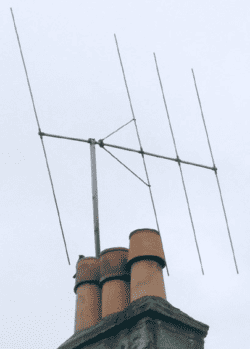Not all TV aerials are equal. But why exactly is there such a variety in shapes, sizes and styles of TV aerial? From the classic old-school rabbit ear antenna to the modern rooftop aerial, these cleverly designed gadgets serve a purpose, no matter the shape. For seamless TV entertainment and stutter-free viewing, here’s why TV aerials come in such varying forms.
Wavelength and Frequency
The main purpose of such a variety of TV aerial shapes and sizes is to detect the right frequency. Different frequencies have different wavelengths, which means a different-sized antenna will be needed to achieve optimal reception and keep your programme playing.
Lower frequencies (VHF) have longer wavelengths – this requires a large aerial, such as the traditional Yagi-Uda design. To detect higher frequencies (UHF), which have a shorter wavelength, you’ll be safe with a compact, small antenna instead.
Directionality and Beamwidth
Sounds complicated, but in short, some antennas can capture signals from a specific direction only, whereas others can receive signals from multiple directions. The Yagi-Uda antenna, which has the classic design of multiple elements arranged in a specific pattern, is a directional option which can capture signals from more distant transmitters. Omnidirectional antennae, like the bowtie or dipole design – the foundation of the rabbit ears – are suited for urban areas where your signal may come from various directions.
Location and Environment
The shape of an aerial has also evolved to suit its environment. In a built-up area, tall buildings may obstruct the line of sight to transmission towers, so a high-gain directional antenna could be your best bet for a seamless signal.
On the other hand, in areas without obstructions, a smaller, less directional alternative could be a sufficient option. For those seeking TV aerial installation Tewkesbury and the wider area, specialist aerial installers such as steveunettaerials.co.uk/our-services/aerial-services/tv-aerial-repair/tv-aerial-repair-tewkesbury/ offer solutions.
Evolving Tech
As technology advances and evolves, more sophisticated and specialised aerial designs are being developed, such as flat-panel and phased-array antennas. These are modern, sleek and compact, ideal for today’s urban environments and capable of boosting reception capabilities.






